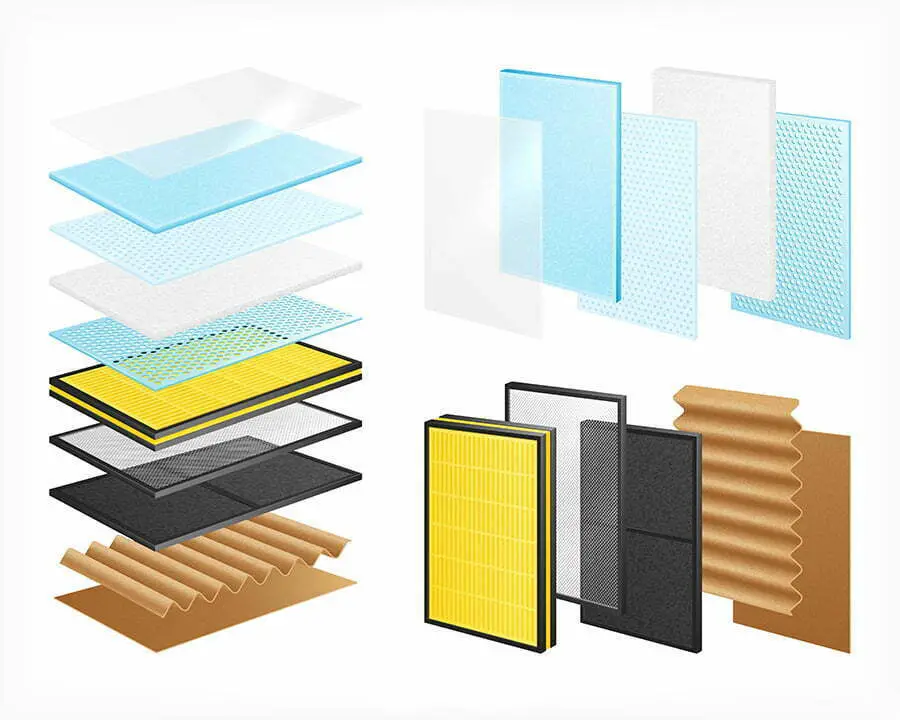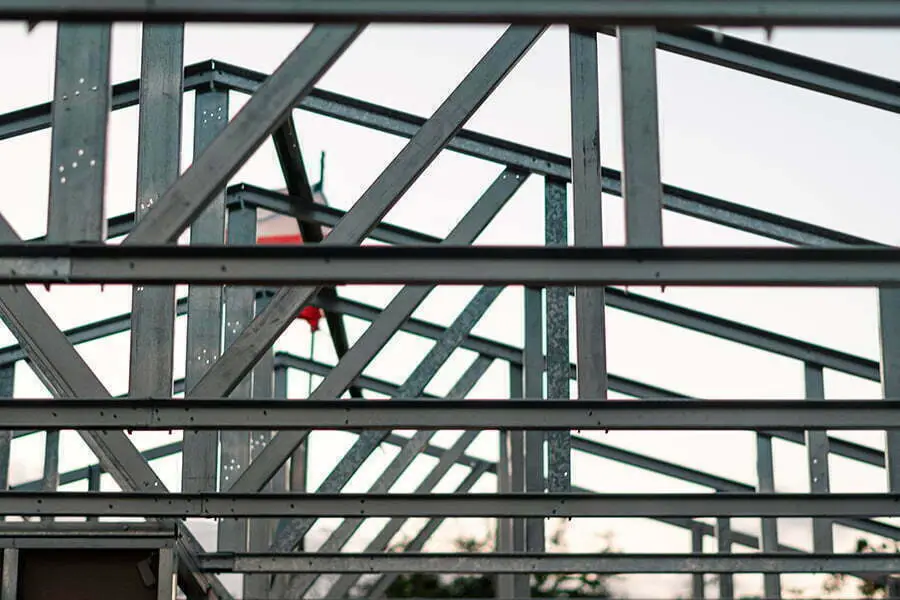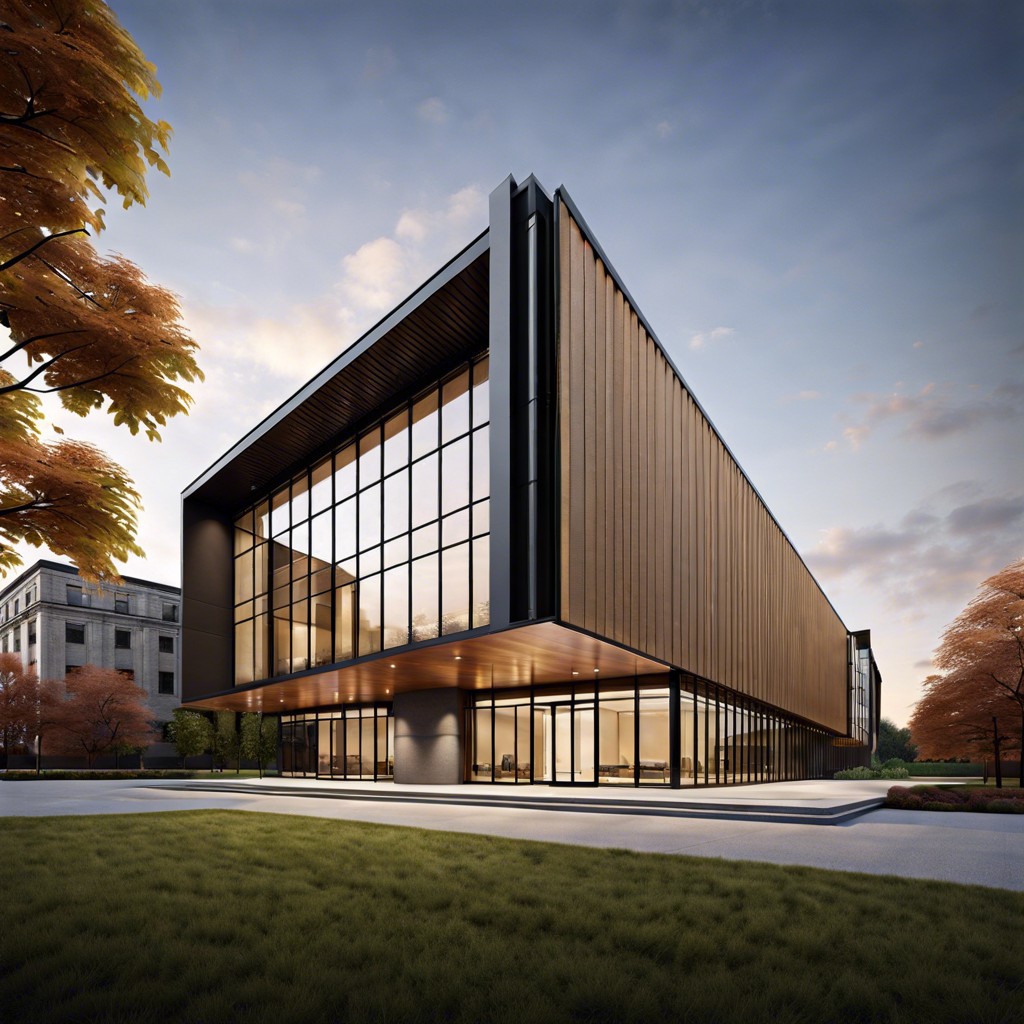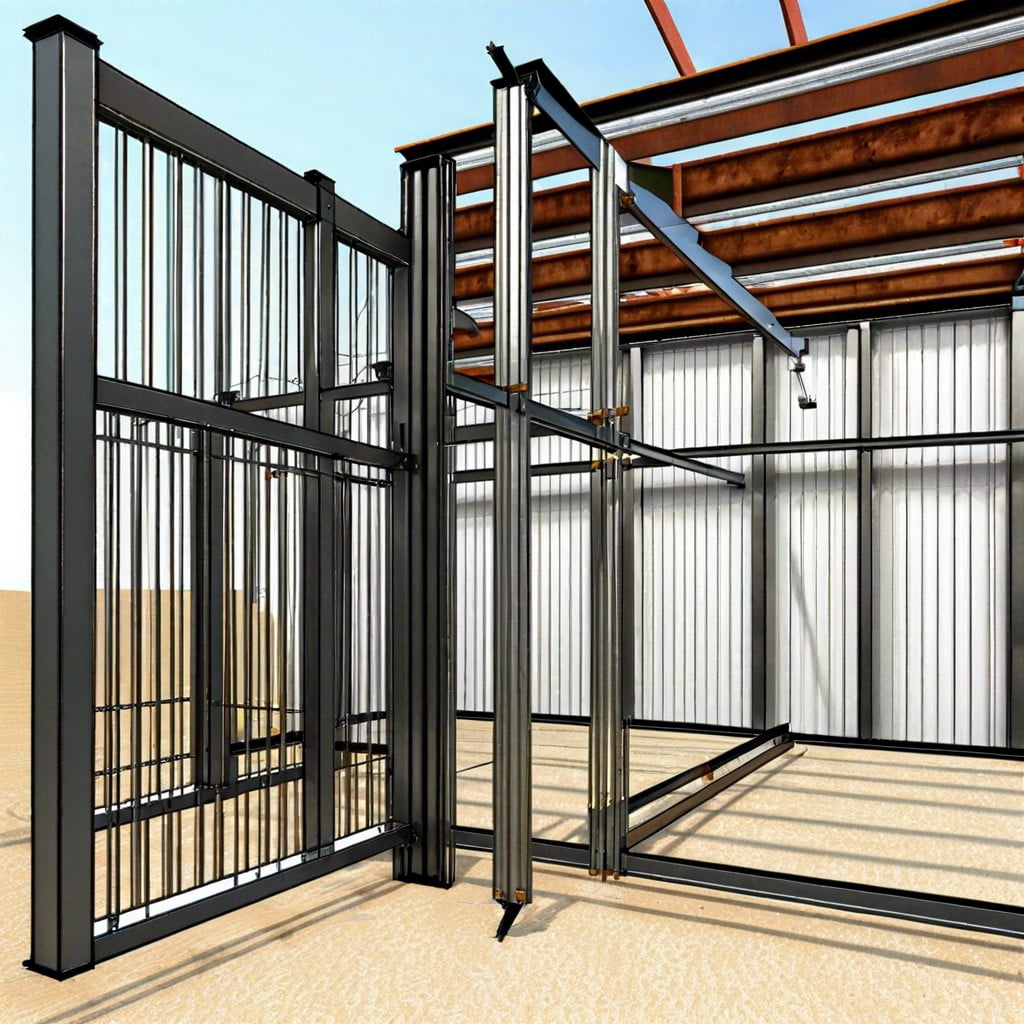Polymers can be used in structural components of buildings. But how do you use polymers for beams, columns, and elements?
Polymers have become increasingly popular in recent years due to their light weight, durability, and cost-effectiveness. These materials are now being explored for use in structural components of buildings, such as beams and columns.
Learn about the potential advantages and disadvantages of using polymers in structural components of buildings. Below are some examples of how polymer materials have been successfully used in construction projects worldwide.
Yes, polymers can be used in structural components of buildings, such as beams and columns. They offer a range of advantages, including strength and durability, resistance to corrosion and fire, and low maintenance requirements.
Key takeaways:
- Polymers can be used in structural components of buildings such as beams and columns.
- Advantages include strength, durability, corrosion resistance, and low maintenance requirements.
- Polymer composites replace steel beams for long spans and bridges.
- Polymer columns offer corrosion resistance and cost-effectiveness.
- Polymers contribute to energy efficiency and can be recyclable.
Structural Components

Structural components include beams, columns, walls, foundations, and floors.
Walls provide lateral support for a structure and can be either load-bearing or non-load bearing, depending on their purpose. Foundations are structures below ground level. These structures support the entire building by transferring their weight onto the soil beneath it.
Floors act as a platform for people and objects in a building. These also provide additional structural support for other structure components above it.
Polymers can be used in these structural components to increase strength and durability while reducing weight compared to traditional materials such as steel or concrete.
Polymer composites replace steel beams due to their high strength-to-weight ratio. This makes them ideal for long spans where weight is an issue. Examples of these are bridges or tall buildings with multiple stories.
Polymers can also be used in columns instead of reinforced concrete. This is due to their superior corrosion resistance, which helps prevent deterioration over time caused by exposure to moisture.
Beams

Beams are horizontal members that span between two supports and provide support for loads placed on them. Polymer beams are made from reinforced plastics. Examples are fiberglass or carbon fiber, which have high strength-to-weight ratios and excellent corrosion resistance.
These materials allow for lighter-weight structures with greater flexibility than traditional steel or wood beams, making them ideal for use in modern construction projects where limited space or weight needs to be minimized. Depending on the application, polymer beams can also be designed to meet specific requirements, such as fire resistance or acoustic insulation.
Columns
Columns are vertical supports that help bear the weight of a structure and can be made from polymer materials. Polymer columns have several advantages over traditional building materials like wood or steel, including being lightweight yet strong, resistant to corrosion and fire damage, and easy to install.
Polymer columns are often more cost-effective than other building materials due to their low manufacturing costs.
Buildings
Polymer buildings are often used in place of traditional building materials like steel or concrete because they are more cost-effective and require less maintenance over time. Polymers can also be designed to have specific properties, such as fire resistance or flexibility, making them ideal for structural components.
By using polymers instead of traditional building materials, architects and engineers can create safe and efficient structures while still being aesthetically pleasing.
Advanced Polymer Types and Their Characteristics
Polymers have revolutionized the construction industry by offering a wide range of materials with unique characteristics. These advanced polymer types are specifically designed to meet the demanding requirements of structural components in buildings such as beams and columns.
One popular type is fiber-reinforced polymers (FRPs), which consist of high-strength fibers embedded in a polymer matrix. FRPs offer exceptional strength-to-weight ratio, making them ideal for load-bearing applications.
They also exhibit excellent corrosion resistance, reducing maintenance costs compared to traditional materials like steel or concrete.
Another notable category is shape memory polymers (SMPs). These smart materials can change their shape when exposed to external stimuli such as heat or light and then revert back to their original form once the stimulus is removed.
SMPs provide opportunities for adaptive structures that can respond dynamically to changing environmental conditions.
There are self-healing polymers that have gained attention due to their ability to repair small cracks autonomously without human intervention. This property enhances durability and extends the lifespan of structural components while minimizing maintenance efforts.
Furthermore, nanocomposite polymers incorporate nanoparticles into a polymer matrix, resulting in enhanced mechanical properties such as increased stiffness or toughness compared with conventional composites. Nanocomposites offer improved performance under extreme conditions like earthquakes or high temperatures.
These advanced polymer types demonstrate remarkable versatility and tailor-made characteristics suitable for various building applications including beams and columns.
Material Testing for Composite Polymer Beams and Columns
These tests evaluate the mechanical properties, performance under different loads, durability, and long-term behavior of these components.
One crucial aspect of material testing is determining the strength-to-weight ratio. This parameter helps assess how well a composite polymer beam or column can withstand applied forces while remaining lightweight.
By conducting various tests such as tensile strength tests or flexural modulus measurements, engineers can accurately determine this ratio.
Another important consideration during material testing is evaluating resistance to environmental factors like moisture absorption or UV radiation exposure. Polymers used in construction must be able to withstand harsh weather conditions without compromising their structural integrity over time.
Fatigue testing plays a vital role in assessing how well composite polymer beams and columns endure repeated loading cycles without experiencing failure or degradation. This type of test simulates real-life scenarios where structures are subjected to constant stress over an extended period.
By subjecting composite polymers to comprehensive material testing protocols that replicate actual working conditions within buildings—such as temperature variations—their suitability for use in structural components can be determined with confidence.
Environmental Impact of Using Polymers in Construction
Polymers are lightweight, which reduces transportation energy and emissions during construction. They have a longer lifespan compared to traditional building materials like wood or steel.
Polymers also have excellent insulation properties, which can contribute to energy efficiency in buildings. This means reduced heating and cooling needs, resulting in lower energy consumption and greenhouse gas emissions over time.
Furthermore, some polymers used in construction are recyclable or made from recycled content themselves. This helps reduce waste generation and promotes a circular economy approach within the industry.
However, it is crucial to consider the entire life cycle of polymer-based structures when assessing their environmental impact. The production process for certain types of polymers may involve chemical reactions that generate harmful byproducts or require significant amounts of water and energy resources.
To mitigate these concerns, ongoing research focuses on developing more sustainable polymer alternatives with improved manufacturing processes that minimize negative environmental impacts while maintaining structural integrity.
Durability and Maintenance of Polymer-based Structures
One key advantage is their resistance to corrosion, which can be a major concern with traditional building materials like steel or concrete. Polymers are inherently resistant to rust and decay, making them ideal for long-term use in structural components.
Polymers have excellent weathering properties. They can withstand extreme temperatures, UV radiation from the sun, and moisture without degrading or losing their strength over time.
This makes them highly durable even in harsh environmental conditions.
Maintenance requirements for polymer-based structures are generally low compared to traditional materials. Due to their resistance to corrosion and weathering effects, they do not require frequent inspections or repairs like steel or concrete structures might need.
However, it’s important to note that proper installation techniques must be followed when using polymers in construction projects. Adhering strictly to manufacturer guidelines ensures optimal performance and longevity of the polymer-based structure.
Regular cleaning may also be necessary for aesthetic purposes as dirt accumulation on the surface could affect its appearance over time; however this does not impact its structural integrity.
Innovation and Future Trends in Polymer Application in Building Structures
Researchers and engineers are constantly exploring new ways to enhance the performance of polymers and push their boundaries.
One exciting area of development is the use of nanotechnology to improve polymer properties. By incorporating nanoparticles into polymers, researchers can enhance their strength, durability, and resistance to various environmental factors such as fire or corrosion.
This opens up possibilities for using polymers not only in non-load-bearing components but also in structural elements like beams and columns.
Another promising trend is the development of self-healing polymers. These materials have the ability to repair themselves when damaged by automatically triggering a chemical reaction that restores their integrity.
Self-healing capabilities could significantly extend the lifespan of building structures while reducing maintenance costs.
Furthermore, advancements are being made towards creating sustainable polymer alternatives derived from renewable sources such as plant-based materials or recycled plastics. These eco-friendly options offer reduced carbon footprint compared to traditional petroleum-based polymers without compromising on performance characteristics.
3D printing technology has gained traction within construction industries worldwide due to its ability to create complex geometries with precision using various materials including advanced polymeric composites. This allows architects and engineers greater design freedom while optimizing material usage during construction processes.
Looking ahead, it’s clear that there is immense potential for further innovation in polymer application within building structures through ongoing research efforts across multiple disciplines including chemistry, engineering mechanics,and material science.The future holds exciting prospects where we may witness even more groundbreaking developments that will revolutionize how we construct buildings using these versatile synthetic compounds.
FAQ
Why are polymers not used in construction?
Polymers are not extensively used in construction because their incompatibility with non-plastic components like concrete and steel reinforcements can cause damage to these materials.
What are the uses of polymers in building construction?
Polymers in building construction are used in various areas such as flooring, windows, cladding, rainwater systems, piping, membranes, seals, glazing, insulation, and signage.
What polymers are used in building?
In construction, polymers such as organic silicon resin, phenolic resin, polypropylene, polystyrene, polyester resin, polymethylmethacrylate, polyvinyl chloride, and polyethylene are frequently used.
Are polymers better building materials than metals?
Yes, polymers are considered better building materials than metals due to their superior strength, longer lifespan, lower cost, environmental friendliness, and resistance to corrosion and toxin release.
How do different types of polymers contribute to energy efficiency in construction?
Different types of polymers, such as polyvinyl chloride (PVC) for window frames and thermal insulation foams, contribute to energy efficiency in construction by reducing heat loss, improving insulation, and enhancing the durability and weather resistance of buildings.
What challenges can arise in the application of polymers in building structures?
The application of polymers in building structures can present challenges like degradation under extreme conditions, structural insufficiency without reinforcement, and tricky installation because of the material’s lightness and flexibility.
How do polymers compare to traditional construction materials in terms of durability and maintenance?
Polymers, compared to traditional construction materials, offer superior durability and require less maintenance due to their high resistance to environmental exposure, corrosion, and wear.
Recap




